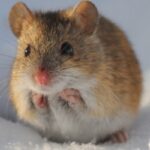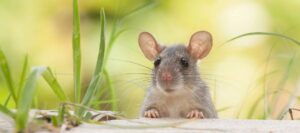
As time goes on, we’re gradually experiencing a shift in the weather throughout the year. Average annual temperatures are rising, and winters are not as cold in many locales. It may feel pleasant, but when the weather is warmer, pests of all kinds are able to thrive. There has also been a notable increase in extreme weather patterns, from tornadoes and droughts to floods and hurricanes. Warmer winters and extreme weather can both make pest behavior different from what we’re used to. Read on to learn what’s changing and what you can do about it.
How Pests Have Adapted
For a long time, we were able to predict the behavior of most pests in relation to the weather. When it’s warmer, insects and animal pests would roam with the usual desire to feed and breed. Then, once winter comes, these pests would either hibernate, overwinter or simply die off. But things change when the weather doesn’t get that cold for long enough. Here are some consequences of insects living through warmer winters:
- A higher survival rate
- The production of additional generations
- Resistance to pesticides
- A greater impact on crops and people
An increase in temperature during the winter months has resulted in the spread of the disease-carrying Asian Tiger Mosquito across Europe and the United States. It’s also dramatically increased the population of deer ticks (whose bites can spread Lyme disease), as well as fleas. To put it simply, the numbers of many types of insects and the portion of the year when they’re active have changed over the past few decades. And severe weather is also becoming more common.
Have a pest problem? We can help!
How Severe Weather Affects Insects
A recent study has shown that extreme weather events have increased significantly over the last few decades. You likely remember the powerful derecho that hit Iowa a few years ago, as well as the drought that we’ve been going through. These and other severe weather events don’t just affect humans. They affect insects as well.
Cold Weather
As the weather dips below a certain temperature, insects generally tend to try and escape by migrating inside or burrowing underground to hibernate until spring. You’ll find that often the chill renders some bugs sluggish, and others completely unable to fly until the climate warms again.
Hot Weather
Insects breed more in the heat, and as their metabolic rate increases they also have to eat more to compensate, which is why they’re more likely to attack gardens and other exposed food sources.
Dry Weather
When the climate outside is particularly dry you’ll find insects like the grasshopper and the spider mite thriving, reproducing at near-record rates. Other insects may struggle without water to breed in or drink and may enter your home looking for moisture in the process.
Wet Weather
Wet weather is a major benefit for mosquitoes, cockroaches, stink bugs, and termites – all insects that live for moisture. But in times of excessive rain, these bugs and more may try and get into your home in hopes of shelter. Stormy weather can also flood the nests of ants and other burrowing insects, which could also drive them into your property.
Springer Professional Home Services For Year-Round Pest Control
Keeping your home pest-free* is not something you do once and then are done with for good. It requires constant vigilance, as well as the initiative to seek treatment as soon as possible. At Springer Professional Home Services, we know that can be a lot for a busy homeowner to deal with. That’s why we offer our PestFree365+ program as a way to provide year-round extermination and pest management.
With this plan, your home is will be from 36 of the most common pests in Iowa. This means regular inspections, as well as tips and recommendations to help you stay pest free. When adapting to a change in the seasons and the weather, you shouldn’t have to worry about bugs or animal pests in your home. And with Springer Professional Home Services, you won’t have to. Contact us today to get started!
Pests in a Fluctuating Climate
Serving Central Iowa since 1989





